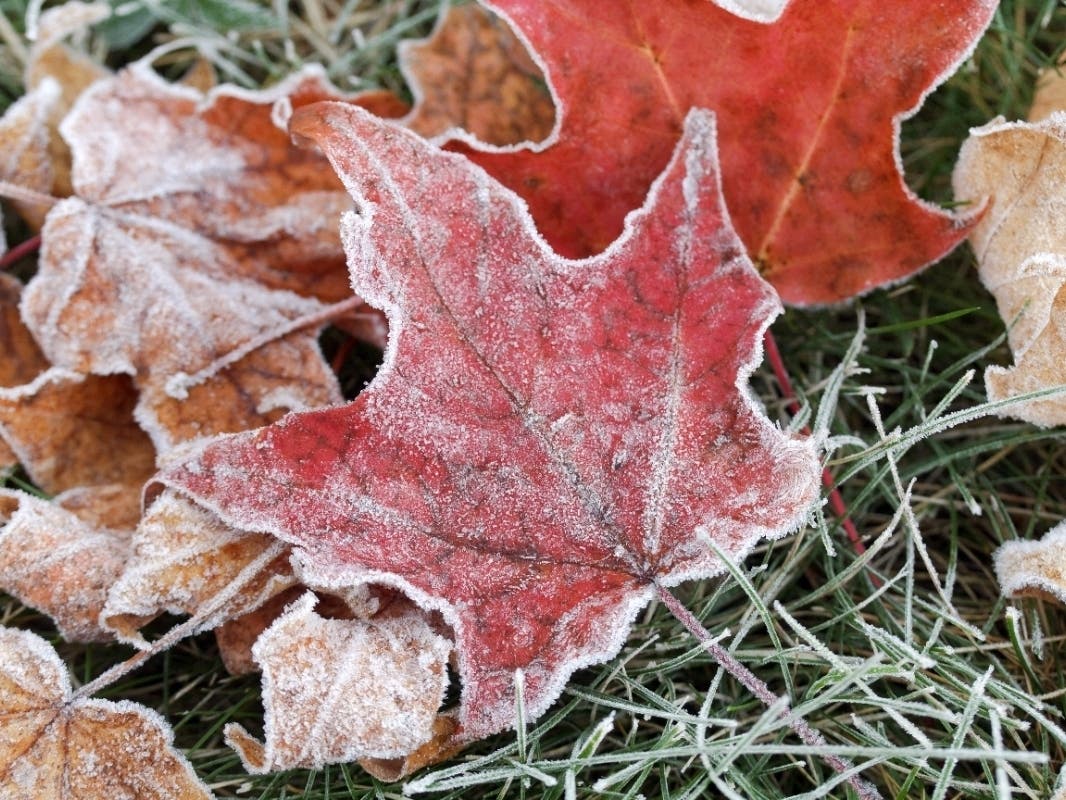Home & Garden
When Does The 1st Frost Usually Occur In WA: How To Protect Plants
The seasons are changing, and the first fall frost is only a few weeks away for some in Western Washington. Here are some key dates to know.

SEATTLE — The gardening season is winding down in much of the United States with the fall's arrival, but the most important dates to keep in mind are in October and November around Puget Sound.
Nov. 15 is the average date of the first frost in Seattle, according to The Old Farmer’s Almanac, a time-tested publication offering a blend of long-range weather predictions mixed with humor and advice on gardening, cooking, fishing, conservation and other topics.
With its by-ZIP-code search tool, Old Farmer’s Almanac makes it easy for gardeners to figure out when they’re most likely to start losing plants to frost. Frost dates can vary by a few weeks around Western Washington, typically arriving by late October around Pierce County's South Hill and in the first week of November near Renton.
Find out what's happening in Seattlewith free, real-time updates from Patch.
Average dates for the first fall frost around Western Washington:
- Seattle (Sand Point): Nov. 15
- Renton Municipal Airport: Nov. 7
- Everett: Oct. 27
- South Hill (McMillin Reservoir): Oct. 22
- Olympia Airport: Oct. 6
In a light freeze of 29 to 32 degrees Fahrenheit, tender plants are killed. A moderate freeze, which occurs when temperatures dip to 25 F to 28 F., causes more damage. Most garden plants can’t survive a severe freeze, which occurs at 24 F. and colder, according to The Old Farmer’s Almanac.
Find out what's happening in Seattlewith free, real-time updates from Patch.
As the first frost approaches, Washington gardeners should keep an eye on local weather forecasts.
The average date of the first frost is an estimate based on historical climate data from the National Oceanic and Atmospheric Administration’s National Centers for Environmental Information. The probability of a frost occurring before the first frost date is around 30 percent.
- You may also like: When Is It OK To Use Leaf Blowers? Or Are They The Devil? [Block Talk: Only On Patch]
You may be able to squeeze more life from plants by protecting them when overnight temperatures dip into the frost-danger zone. Some early fall favorites, such as pumpkins, tomatoes, sweet corn, watermelon and others, can be damaged at 33 F., according to the publication.
The best way to protect plants from frost is to cover them with a blanket, bedsheet or some type of row cover. Drape them loosely over the plants, and anchor with them bricks or rocks.
The Old Farmer’s Almanac has more tips, as well as a vegetable-specific guide to frost dates.
If you invested in hibiscus and other tropical plants, Boston ferns, geraniums and others for your deck, these ornamentals and herbs can overwinter inside.
The Old Farmer’s Almanac spells out what to do — it depends on the variety of plant — but in general, give them as much light and humidity as possible, keep them away from heat ducts and expose them to artificial light if necessary.
Take care of this before the first frost. Regardless of the plant, you’ll want to check for aphids and other insects. Spraying a 1 percent solution of Dawn dishwashing detergent (original) can do the trick. For best results, mix 2½ tablespoons of detergent in 1 gallon of water.
Bulbs, tubers and corms, such as cannas, dahlias and some lilies, can overwinter in the basement or garage. Just cut back the foliage, gently dig up the bulb and store the dried roots in a cool, dark spot, such as a basement.
Get more local news delivered straight to your inbox. Sign up for free Patch newsletters and alerts.